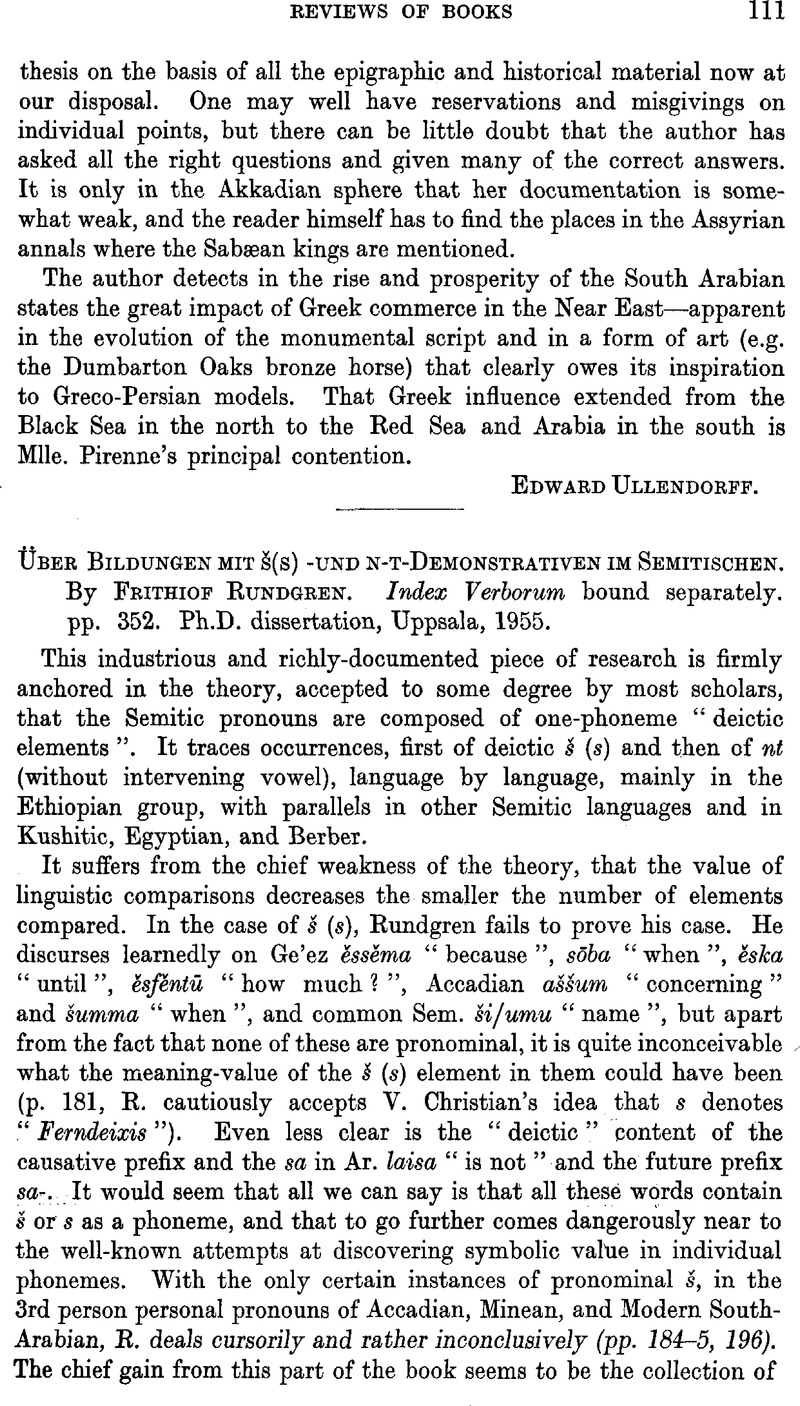No CrossRef data available.
Article contents
Über Bildungen mit š(s) -und n-t-Demonstrativen im Semitischen. By Frithiof Rundgren. Index Verborum bound separately. pp. 352. Ph.D. dissertation, Uppsala, 1955.
Published online by Cambridge University Press: 15 March 2011
Abstract

- Type
- Reviews of Books
- Information
- Copyright
- Copyright © The Royal Asiatic Society 1957
References
page 112 note 1 Cf. my Ancient West-Arabian, p. 40.
page 112 note 2 Cf. von Soden, , Grundriss d. Akkad. Gr., § 44f.Google Scholar I would like to suggest that these forms came about by “popular etymology”: in the old forms yattun, kattum, šattum, etc., the -attum was felt to be a significant element, and all that was done was to transfer the pronominal elements from the apparent prefixed position to the more usual suffixed one.
page 112 note 3 This may give us the etymology of G. ěnza, which with the impf. forms the normal equivalent to Greek participles. It is to Ar. alladhī as ěnta is to allatī. To render a participle by a relative clause is of course a common device in English. In a case like Gn. iii, 8: “they heard the voice of God walking (φɛριφατο⋯ντος) in the Garden,” the G. ěnza yaḥawwěr wěsta gannat could just as well be translated as “who was walking in the garden”. From such cases its use may have been enlarged to those where the antecedent is f. or pl. or 1st and 2nd person, until it became a particle—following in this respect ěnta—and was in its original rel. function replaced by za.
page 113 note 1 The connection of the -māl- element with Heb. mūl (twice mōl) “opposite” and the root 'wl (p. 292) is of course phonetically impossible.
page 113 note 2 Which has, however, been much strengthened now by the 
page 113 note 3 The ū and ī of the G. forms are perhaps to be explained as “présentatifs”, as in the 3rd sg. pronouns of the Central-Arabian Ṣlūṭ colloquial, her'ū, f. her'ī (cf. Cantineau, J., Études sur quelques parlers de nomades arabes de l'orient, in AIEO 2–3 (1936–1937), p. 107Google Scholar of the offprint).




